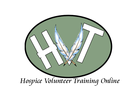It is always refreshing when science is on your side. For years, I�ve been talking about the power of laughter for family caregivers. It may not be the first conversation to have with someone who just received the call in the middle of the night that something traumatic has happened to a loved one, but eventually they will smile. And if today�s 12th annual Fort Lauderdale Fearless Caregiver Conference is true to form, we will be sharing laughs as well as tears and wisdom with one another. The truth is that there are some things that will make family caregivers roil with laughter which non-caregivers could never understand. Another powerful reason for joining a support group�but that is another rant.
As I mentioned above, statistics are now on my side when discussing the power of humor for family caregivers. A new study finds that laughing a lot can actually make you healthier by lowering blood pressure and bad levels of cholesterol.
Dr. Lee Berk, from Loma Linda University, California, who led a study on the healing power of laughter, said emotions and behavior had a physical impact on the body. He concluded that ''the body's response to repetitive laughter is similar to the effect of repetitive exercise.''
Volunteers who were asked to watch 20 minutes of comedies and stand-up routines registered a dramatic drop in stress hormones, blood pressure and cholesterol. They also had their appetite stimulated, as happens with exercise. This means that ''laughercise'' could be a way to reduce heart disease and diabetes. It is especially important for the elderly, who may find it hard to do physical exercise.
''As the old biblical wisdom states, it may indeed be true that laughter is good medicine,'' he said.
Amen and ha-ha-ha.
Share your funny caregiving story
Gary Barg
Editor-in-Chief
gary@caregiver.com
Wednesday, April 28, 2010
The Best Medicine, After All
Tuesday, April 27, 2010
Hospice Volunteer Training Online - Choosing the Path of Service
ATTENTION: VOLUNTEER COORDINATORS
Your hospice agency can use this program to train your hospice volunteers on your own personalized site.
No set up fee
Free technical support
Site updated.
Sunday, April 25, 2010
Larry Beresford: Are Hospice Enrollments Declining?
Two recent web postings pose the question: why are fewer patients enrolling in hospice? That's a provocative question for a hospice industry that has known nothing but upward growth. But I'm not sure they answer the question: Are hospice enrollments declining? If they were declining now, we might not see conclusive data to prove it for another 12-18 months.
In his blog Palliative Care Success, Tim Cousounis says "The question why are referrals to hospice slowing? seems to be making the rounds these days," and he attributes the trend to perennial misconceptions about hospice coupled with more recent vitriolic attacks on hospice care such as the notorious "death panels."
Howard Gleckman, senior research associate at the Urban Institute, has a Feb. 18, 2010 column at Kaiser Health News that asks the same question. "Suddenly, many hospices are admitting fewer patients. Others are increasingly caring for people for just days or hours before they die." Gleckman points to a bad economy and "Medicare rules that unintentionally discourage doctors from referring all but those who are about to die."
The problems of misunderstanding, misconceptions and mistrust of hospice care by people confronting hard choices at the end of life have been around throughout the history of hospice in America, even as the number of people receiving hospice care has steadily grown, up to 1.45 million in 2008. Physicians' reluctance to bring up the "H" word with their terminally ill patients has been well-documented. The second-guessing of hospices' enrollment decisions by Medicare has also intensified recently, but is not a new phenomenon. A similar round of government scrutiny occurred in the mid-1990s. And still the trends of the number of hospices, number of patients served and total Medicare outlays have pointed steadily upward since the first U.S. hospice opened in 1974 and since Medicare began paying for hospice care in 1984.
I contacted a couple of leading hospice executives to ask them if the declining enrollments trend is true. One said that hospice patient census fluctuates up and down for all sorts of reasons, but that his agency's is up, after a sharp drop in 2008. But Samira Beckwith, CEO of the highly successful Hope Hospice and Palliative Care in Fort Myers, Florida, responds, "I think that everything [Gleckman] says in his article is true." One of the problems, she says, is that America's hospices still have not successfully communicated the idea that hospice care means "living" as fully and as well as possible until death comes. Instead, Americans have learned a little bit about hospice and believe it means "they have to die really soon if they say yes."
The MBAs who run fast food or pharmacy chains are taught that when your company or your industry stops growing, it is already dying. But is that the right model for a service designed to promote compassionate, individualized, quality of life-promoting care for dying patients and their families? Shouldn't hospice's goal be to offer a meaningful option to all those who might need it and want it, and who might qualify, according to the rules of those who would pay for it, as being terminally ill -- rather than just continuing to grow? And if there is a current decline in referrals, given the recent proliferation and rampant competition of mom-and-pop hospice providers, particularly in certain metro areas and in the states of Alabama, Mississippi and Oklahoma, perhaps what's happening now is what the economists might call a necessary market correction.





